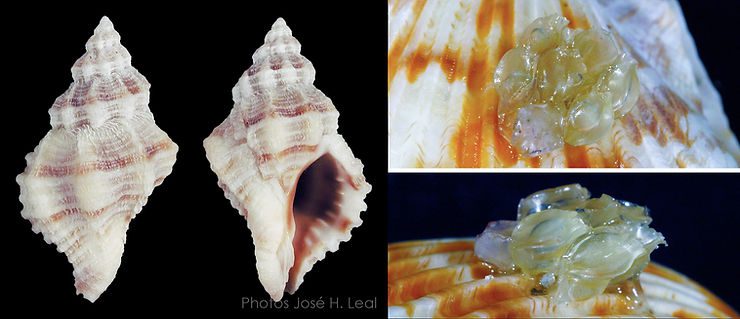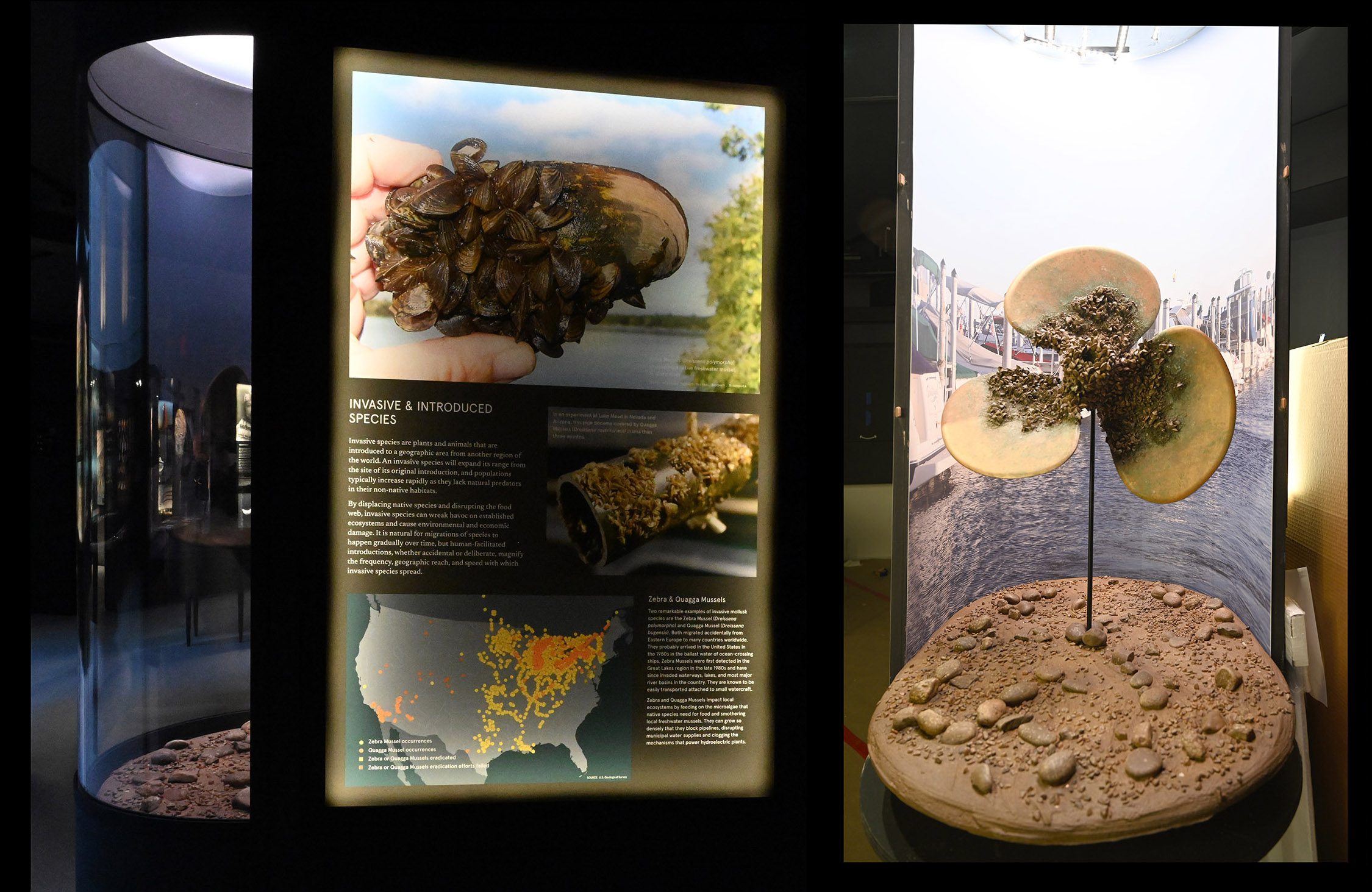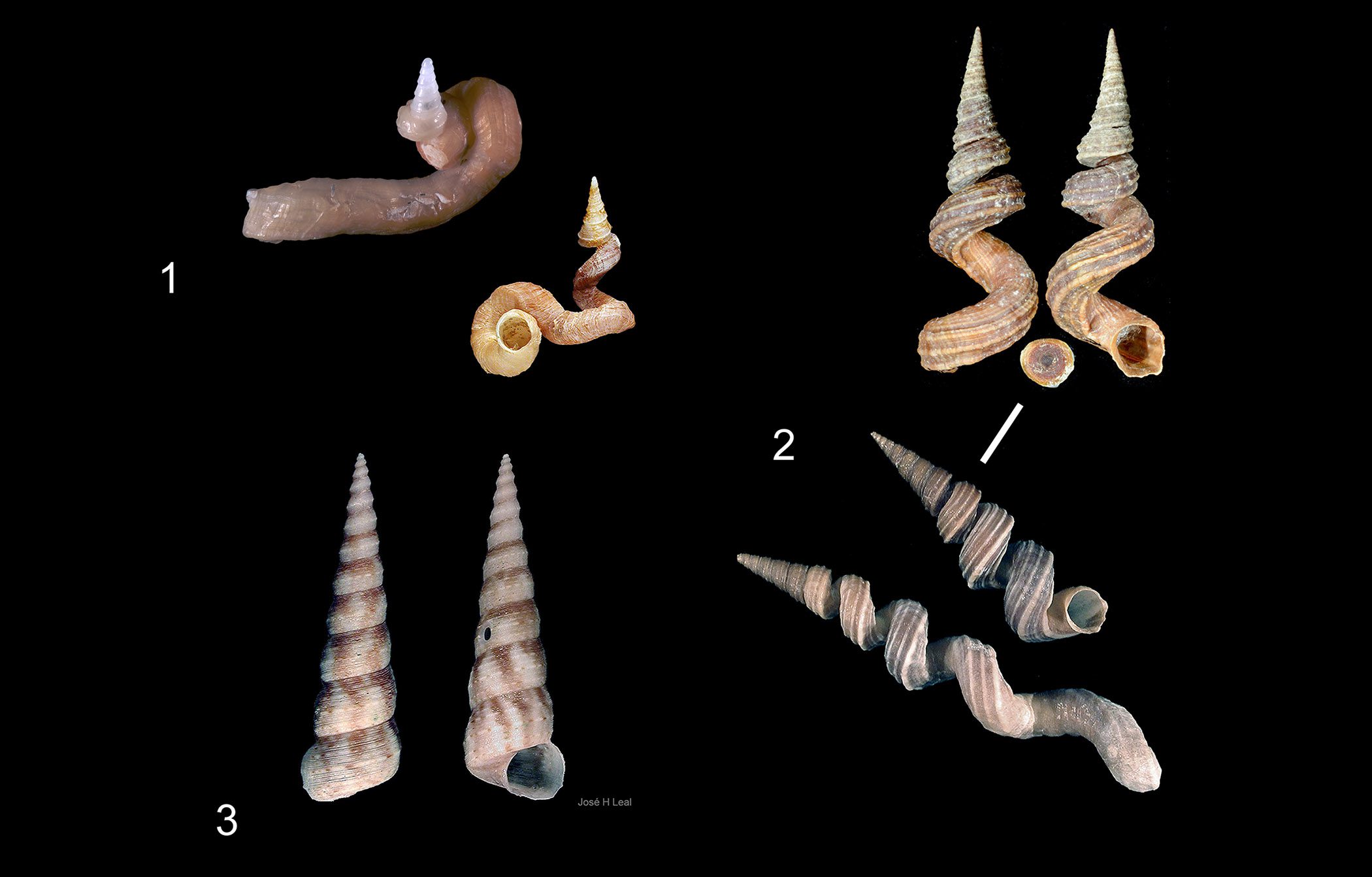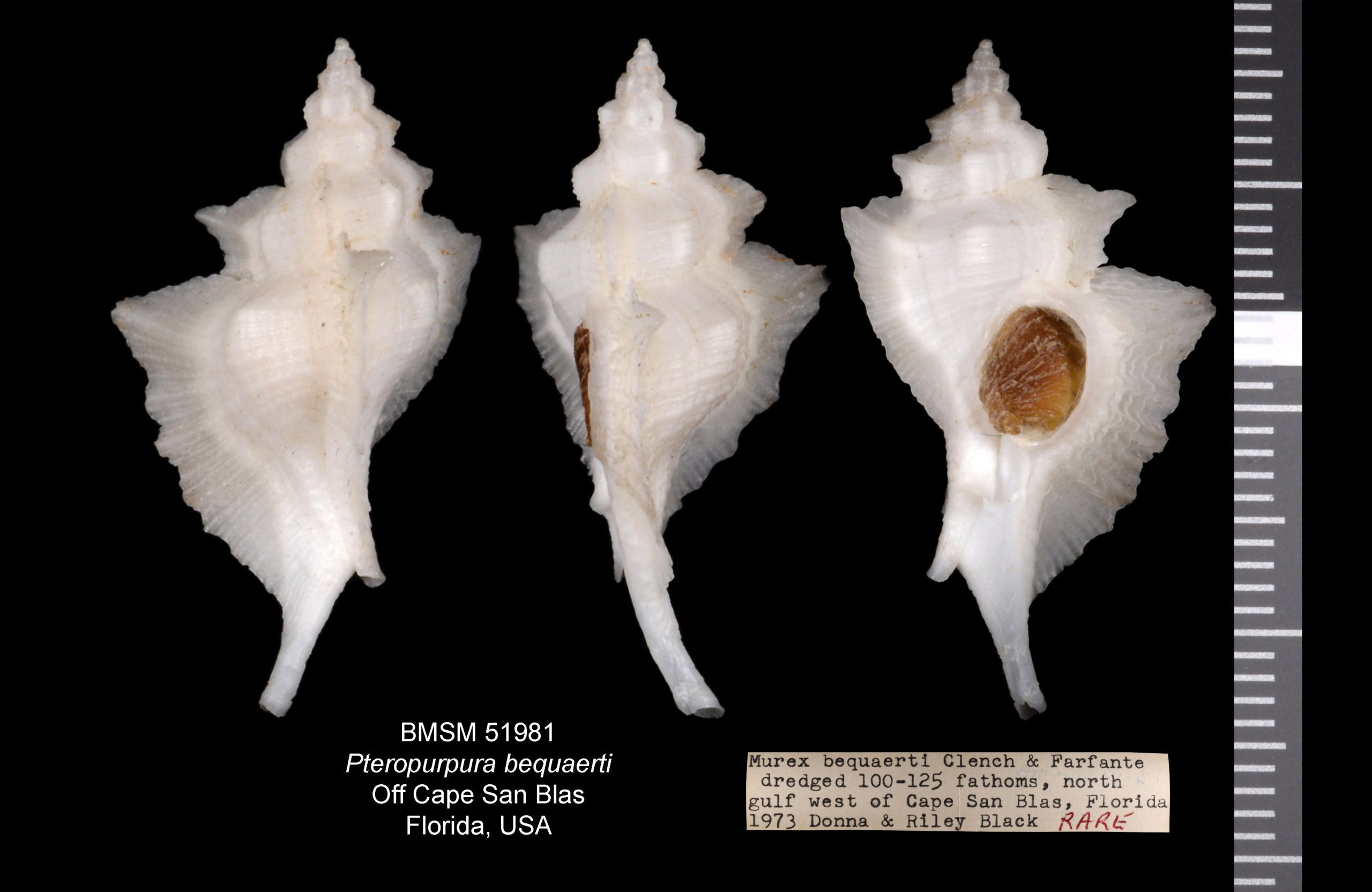The Gulf Oyster Drill, Vokesinotus perrugatus (Conrad, 1846) is one of at least 10 local shallow-water species of the family Muricidae. As the name implies, it uses its radula (ribbon of sharp teeth) to drill holes through the shells of oysters and other bivalve mollusks. The hole provides an avenue for the introduction of chemicals that will initiate the feeding process. At about an inch long, its shell is shaped like a double cone, with a wide range of possible color variations. Females lay eggs in egg capsules that look like miniature amphorae. Egg capsules are attached by narrow stalks to hard surfaces, usually shells.

The Gulf Oyster Drill, Vokesinotus perrugatus, from Sanibel. Egg capsules are about one quarter inch tall. Photo by José H. Leal.


